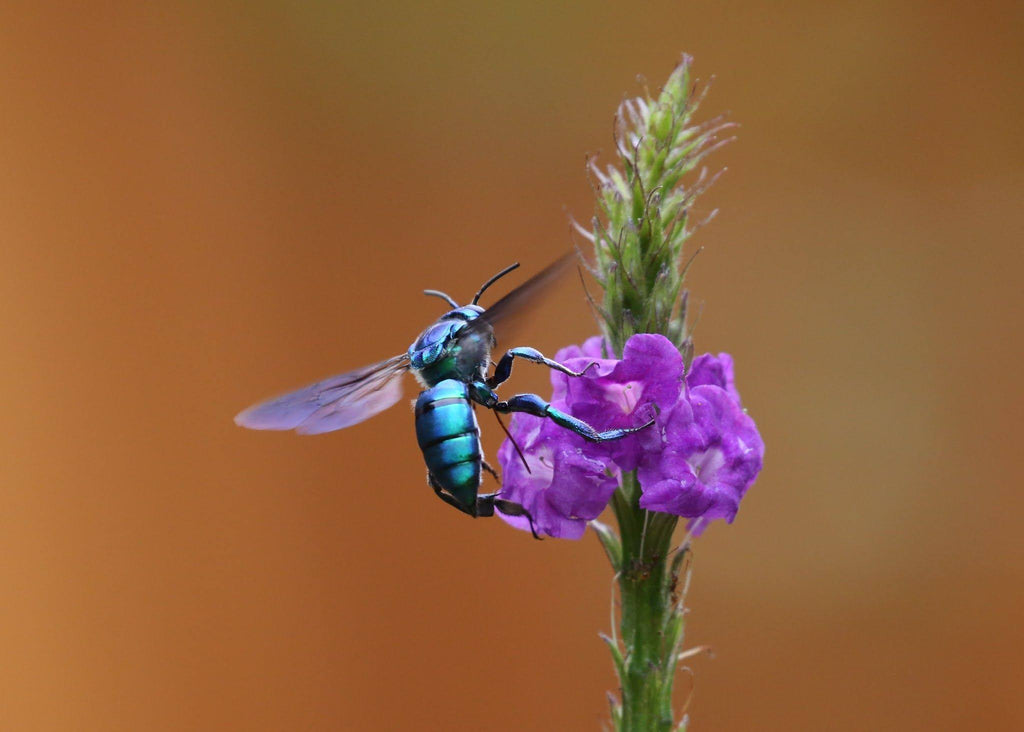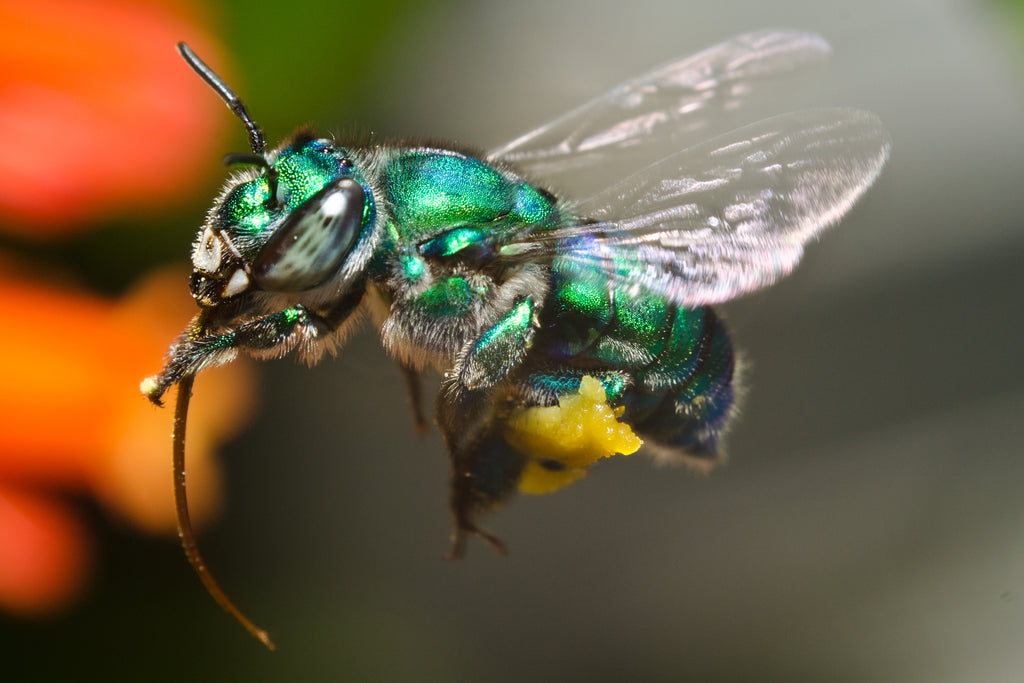Everything You Need To Know About Orchid Bees
In this article, we will be having a quick discussion on orchid bees, where they can be found, some of their unique characteristics, behavioural patterns, and reproductive habits.
So, let's get started!
What are Orchid Bees?
Orchid bees, also known as Euglossine bees, are a fascinating group of insects that have, over the years, captivated the attention of scientists and nature enthusiasts alike. With their vibrant colours, unique behaviours, and ecological roles, orchid bees hold a special place in the biodiversity of tropical regions.

This beautiful Orchid Bee (Exaerete kimseyae) has been voted Spotting of the Week! Exaerete is a genus in the New World tribe Euglossini, commonly known as orchid bees or Euglossine bees.
Let's have a deeper look at these fascinating creatures.
First things first, where are orchid bees found?
Orchid bees are primarily found in tropical and subtropical regions of the Americas, including Central and South America, as well as some parts of the southern United States. These bees inhabit a variety of ecosystems ranging from rainforests and cloud forests to dry forests and savannas and play an important role as pollinators in these diverse habitats. They can be easily distinguished from other bees because of their long and thin tounges, shiny metallic colour and relatively lesser hairs.
Behaviour and Reproduction
When it comes to reproduction, Orchid bees exhibit some fascinating behaviours. Male orchid bees perform elaborate aerial displays near their chosen perches, where they release pheromones and have some pretty competitive interactions with rival males. Females are attracted to these displays and choose their mates based on the quality and intensity of the male's pheromonal offerings.

Another important thing to mention here is that orchid bees are quite famous for collecting and storing fragrances, especially male bees who collect these scents from flowers and use them to attract females when the mating season arrives.
After mating, female orchid bees construct nests in different locations such as hollow tree cavities, termite nests, and underground burrows. They also make use of plant materials such as leaves, mud, and resin to construct their nests and provide them with pollen and nectar as food for their developing offspring. Each female typically lays a single egg per cell within the nest, and the larvae develop within these cells until they emerge as adults.
Efforts for Conservation
Last but not least, let's talk about orchid bees from the sustainability perspective.
As you may already be aware, orchid bees face numerous threats to their survival, including habitat loss, pesticide exposure, and climate change which means that they may go extinct in the future. Growing issues such deforestation and urbanisation contribute to the destruction of their natural habitats, while agricultural practices often expose them to harmful chemicals.
But because of their deep ecological importance, it's essential to make conservation efforts aimed at preserving the habitats of orchid bees so that we can ensure their long-term survival.
Here are a few practices that can make a significant difference:
- Protecting and restoring tropical forests
- Establishing pollinator-friendly agricultural practices,
- Raising awareness about the importance of orchid bees in ecosystem functioning on both local and International platforms.
This brings our article to an end. We hope it has served as a resourceful guide and has made you more educated on orchid bees!
References
Bee | Definition, Types, & Facts | Britannica
Orchid Bee: All You Need to Know in a Nutshell - What's That Bug? (whatsthatbug.com)
